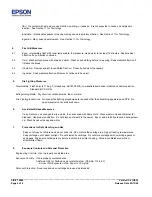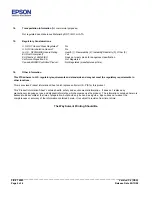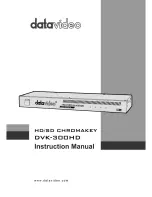
______________________________________________________________________________________________________
PIS # T6245 Version 3.6 (USA)
Page 3 of 4 Release Date 05/13/08
9. Physical and Chemical Properties of Ink Formulation
Appearance
:
Light Cyan Liquid
Odor
:
Slight
pH
:
8.0 – 9.0
Boiling point
:
No data available
Freezing point
:
Less than 32 deg. F / O deg. C
Melting point
:
Less than 32 deg. F / O deg. C
Flash point
:
71 deg. C (closed cup, ASTM D3278)
Autoflammability
: None
Explosive properties
: Explosive limit, 1.4 – 6.9v/v% as
γ
-Butyrolactone
Oxidizing properties
: None
Vapor density
:
Greater than 1 (air=1)
Relative density
:
1.03 at 68 deg. F / 20 deg. C
Solubility in water
: Soluble
Solubility in fat
:
No data available
Partition coefficient
:
No data available
Viscosity
:
No data available
10. Stability and Reactivity
Stability
:
Stable under normal temperatures
Hazardous polymerization
: Will not occur
Hazard decomposition products:
No data available
Incompatible materials
:
Oxidizers
and
explosives
11. Toxicology and Health Hazards
Routes Of Overexposure
: Eye, skin, inhalation, and oral
Acute Health Hazards
:
•
Overexposure of eye surface to ink may be mildly irritating
•
Overexposure of skin to ink contact may cause irritation and in some people swelling and redness
•
Intentional inhalation overexposure to ink vapors may result in respiratory tract irritation and anesthesia
•
Intentional or accidental oral ingestion may cause an upset stomach
Chronic Health Hazards
:
None
known
Carcinogenicity
:
Not containing substances listed in IARC Monographs (1, 2A, 2B)
Toxicity Data
:
Oral LD50
Dermal LD50
Inhalant LC50
OSHA Regulated?
>2500mg/kg(Rats) >2000mg/kg(Rats) Not Applicable
Not Established
12.
Ecological Information
No data available on the adverse effects of this material on the environment
13. Disposal Considerations
Disposal should be in accordance with federal, state, and local requirements.






















